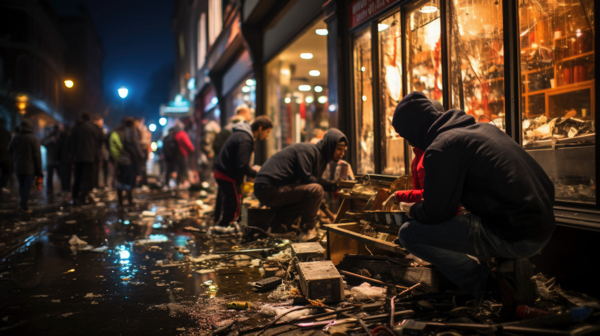
Major retailers and industry associations have for the past few years been sounding the alarm about the increase in organized retail crime. Horror stories – complete with high-quality video evidence – of organized and devastating smash-and-grabs are easily available online and regularly go viral on social media, leading to major retailers locking their most valuable items behind bars or glass. (Related: Organized retail crime, not just shoplifting, is surging across the U.S. with dangerous and costly consequences.)
It is not clear what percentage of the theft is organized and individual actions. It is also not clear how many of those who perpetrate individual criminal acts are affected by mental illnesses or drug addiction.
There's also a percentage of retailer losses caused by shrink, which is industry-speak for inventory that has gone missing due to other factors including employee theft, operational lapses and other unknown causes. Therefore, understanding just how much is stolen by the most commonplace, "regular" people is difficult to see.
And although retailers' shrink has declined without cause, it doesn't mean theft or organized retail crime has gone away as stated by David Johnston, the vice president of asset protection and retail operations at the National Retail Federation.
Johnston said that shrink is just a portion of the story and does not factor in other concerns coming from theft such as violence against workers, physical damage to stores and customer and employee ideas of store safety.
"Theft and loss can still be an issue even if shrinkage is leveling off," Johnston stated.
Shoplifting rate during the first half of 2024 in major cities 24% higher than last year
The shoplifting rate during the first half of 2024 in major American cities was 24 percent higher, on average, than the same period last year, as reported by a recent analysis by the Council on Criminal Justice (CCJ), a nonpartisan criminal justice policy organization. The shoplifting rate in the first half of 2024 was also 10 percent higher than in the first half of 2019.
The National Association of Shoplifting Prevention estimates that about one in 11 people has shoplifted during their lifetime and that men and women are just as likely to be the criminal.
Some surveys indicate that the number could be higher, such as one in five. Survey data, nonetheless, often doesn't explain the difference between someone who shoplifted a candy bar one time as a child and someone who does it with consistency.
According to Ernesto Lopez, a senior research specialist at the CCJ, there is not much difference among income groups when people are asked whether they have ever shoplifted. However, Lopez notes that analysts know that about 80 percent of shoplifting incidents only involve one person and that the average value of shoplifted goods has been rising.
Follow Collapse.news for more news about the rising crime rates in the United States.
Watch this video from political commentator and financial analyst John Williams discussing America's shoplifting epidemic and how it caused a wave of retailer bankruptcies.
This video is from the Thisisjohnwilliams channel on Brighteon.com.
More related stories:
LICENSE TO STEAL: California senators pass SB 553 to prohibit retailers from stopping shoplifters.
Rampant shoplifting is forcing retailers like Walmart and Target to LOCK UP essential products.
Sources include:
Please contact us for more information.






















